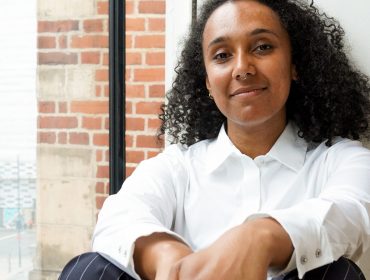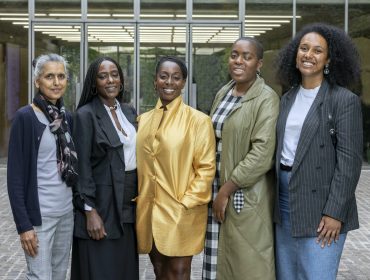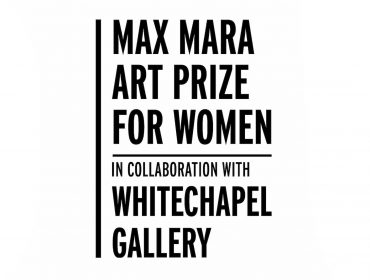Dominique was announced as the winner of the 9th edition of the prize on 28 March 2023, for her proposal of a new body of work entitled Deadweight.
The residency, organised by Collezione Maramotti, is specially designed to inform, support and develop the work through dedicated resources and a tailored programme of research, mentoring and skill-building.
Deadweight continues her key artistic, political and philosophical concerns, with a focus on exploring and creating new worlds for ‘Blackness’, weaving together theories of Black Subjectivity, Afro-pessimism and Hydrarchy, manifested through distinctive sculptural installations employing discarded nautical relics and materials such as clay and untreated iron.
‘Deadweight’ is not only a new thread in this exploration of means of abolishing the state, it is a new chapter in imagining a new future. The core of my practice is about daring to dream of new worlds in the unknown and attempt to bring them to fruition. It’s a reminder that there isn’t only one future, or one interpretation of how the world should be and I truly believe that these are the times that we should persist in these aspirations to survive, to retaliate and defy categorisation’ – Dominique White
White is fascinated by the metaphoric potency and regenerative power of the sea and this new work takes as a starting point the measure of ‘deadweight tonnage’, an official term used in the maritime industry that calculates how many units of weight a ship can take before it sinks. Over the next six months White will explore and interrogate the meaning and exploitation of ‘deadweight’ tonnage, its relevance to the historical slave trade and its contemporary forms in the Mediterranean through a dedicated programme of research and activity. She will spend time in various locations in Italy including Agnone, Palermo, Genoa, Milan and Todi, visiting relevant museums, historical archives and research centres, meeting with a series of experts and working with key foundries and metalworkers to pursue and deepen her knowledge of the production processes, skills and techniques required to develop and expand her vision.
We will be following her progress throughout the residency period, offering regular updates and access to her creative process, as well as providing resources for further exploration and understanding of the themes and issues addressed in her work and practice more widely.
White’s first stop was in the small Italian town of Agnone, in the Molise region of Italy, to undertake a week-long workshop at the Campane Marinelli bell foundry – one of the oldest and most revered in the world.
The history of the foundry is a long and fascinating one; the Marinelli family founded the studio over a thousand years ago, and it remains very much a family run business today. In addition to bells, the foundry produces bronze portals, bas-reliefs using the same tried and tested techniques and materials. Dominique was able to work closely with the team there, gaining new skills and deepening her understanding of the process involved in casting and pouring bronze.
“I feel like I can disappear quite easily in Palermo... We’ve been talking about Black Saints, which has been for me, deeply fascinating because it’s not a subject that I have touched upon before” – Dominque White
In the ancient Sicilian capital of Palermo, White met up with Giovanna Fiume, a renowned Historian and former Professor of Modern History, to gain insights into the complex historic and contemporary slave trade in the region. White and Fiume embarked on a series of dedicated one-to-one tutorials and visits to sites in and around Palermo, including a trip to Santa Maria di Gesù, a Baroque church which holds the grave of St. Benedict the Moor (1526-89), a patron saint in Palermo known for his charity who was the freed son of African slaves.
“The sea is a complex thing. The ship is an even more complex thing” – Massimo Corradi, Professor of History of Science and Structural Engineering, University of Genoa.
In Genoa, Dominique undertook a concentrated investigation into the ship – a key figurehead of this work and her practice more widely. She is fascinated by the ship’s power as both a symbol and object; from its materiality, its construction, its multifaceted complex and conflicted histories, and its status as a catalyst for establishing dominant global powers.
Under the tutelage of Professors Claudia Tacchella and Massimo Corradi, who specialise in construction science and history, White visited some of the most significant naval and archaeological museums and archives across Genoa, looking at the history of shipwrecks, the content of these wreckages and the geopolitical significance of the lost ships.
White has been in Milan during the month of August. Here, in the northern capital, the artist has participated in a workshop at Fonderia Artistica Battaglia, honing her skills in the centuries-old tradition of creating handmade bronze artefacts using an intricate lost-wax casting technique.
As the artist told Giulia Giaume from Artribune, “I have always worked with iron and seen bronze as a more decorative material […] the lack of previous knowledge on the subject allows me to […] access any possibility: it is very exciting.” During her residency, White has been exploring the nautical term ‘deadweight tonnage’, a measurement of the capacity of a ship to bear weight, considering both its relevance to the historical slave trade and to its contemporary forms in the Mediterranean. While in Milan, the artist has also visited the Museo Nazionale della Scienza e della Tecnologia Leonardo da Vinci, the largest science and technology museum in Italy, which houses in its collection the Enrico Toti submarine, the first submarine built in Italy after WWII.
Dominique now heads to Todi for the final stage of her residency, where she’ll further refine her metalworking practice and evolve towards her final body of work.

Dominique White is the winner of the 9th edition of the Max Mara Art Prize for Women. Learn more about her practice and winning proposal, Deadweight.

Explore the practice of the artists shortlisted for the 9th edition of the prize: Rebecca Bellantoni, Bhajan Hunjan, Onyeka Igwe, Zinzi Minott, and Dominique White.

Find out more about the previous winners of the Max Mara Art Prize for Women.